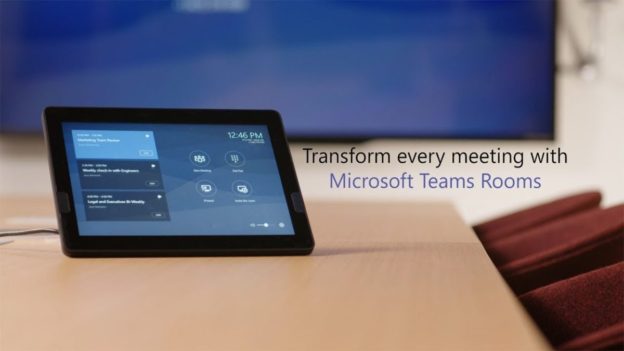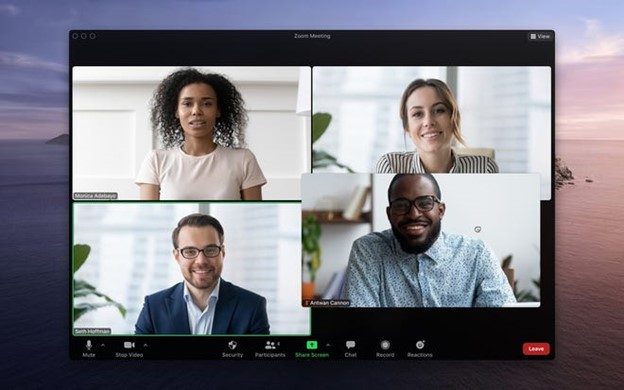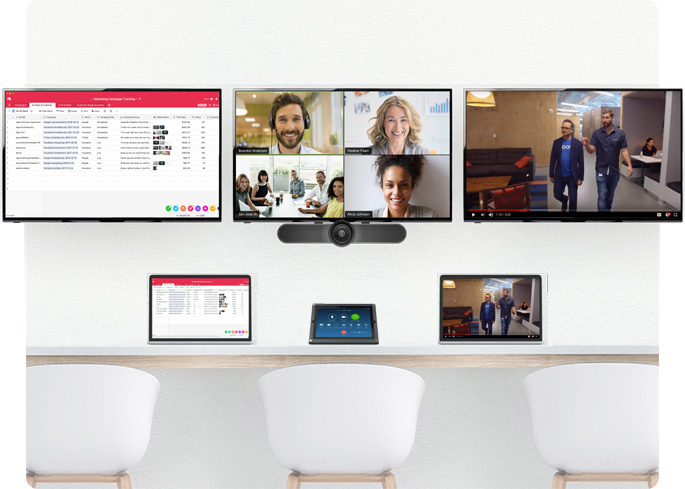
Owing to the ongoing pandemic, there has been an explosion of video conferencing software solutions to assist customers and companies to remain connected. These networks have become an integral part of the “new standard”, enabling schools to continue teaching, families and friends to maintain social interaction, and businesses to efficiently collaborate while employees work remotely.
Microsoft Teams and Zoom have positioned themselves as the clear cut leaders in video conferencing and collaboration. Both have been crucial platforms to keep people connected and are here to stay for the long run. This article will highlight key features of each platform and take a comparative look at the solutions, helping you determine which is best suited for your organization.
Let’s start by taking a look at Microsoft Teams.

What is Microsoft Teams?
Teams is a proprietary business communication platform designed and distributed by Microsoft. Microsoft launched Teams worldwide on March 14, 2017. This collaborative business tool helps your team stay organized and connected, at the click of a button. Microsoft Teams is a perfect option for Microsoft 365 users, as organizations and their employees can use the app free of charge.
Features & Benefits:
Teams
- Teams allows groups of individuals to join through a specific URL or invitation sent by an organization administrator/owner. Teams allows admins and users to set up specific private collaborative groups for employees, clients, instructors, professional learning communities, and many more.
Channels
- Channels are topics of conversation that allow team members to communicate without the use of emails or group SMS (texting). Users can reply to posts with text as well as images, GIFs, and custom-made memes. Users can also send private messages to a specific user rather than a group of people. Connectors or third-party services MailChimp, Facebook Pages, Twitter, PowerBI, and Bing News can also submit and post information and comments to channels.
Chats
- Teams allows users to format text and use emojis during chats. Users can choose to mark a message as urgent or important. Important messages show up with a red side border and notify the receiver at regular intervals until it’s seen.
More About Microsoft Teams
- Other features and benefits include: Group Chat, File Sharing, Calling, Meeting, Education, Protocols, Virtual Backgrounds, Calendar (through Outlook).
Microsoft Teams can be accessed using both the web app or desktop app; however, the desktop app has additional features and is the recommended app to use for the full Microsoft Teams experience. The experience in Teams can be navigated through channels offering workspace chat and videoconferencing, file storage, and application integration. Teams is replacing other Microsoft-operated business messaging and collaboration platforms, including Skype for Business and Microsoft Classroom.

Microsoft Teams Rooms
Microsoft Teams Rooms brings a complete meeting experience HD video, audio, and content sharing to meetings of all sizes, from small huddle areas to massive conference rooms.
Microsoft Teams Rooms requires the following components to deliver a great user experience: Touchscreen Control Panel, Windows Room PC, Microsoft Teams Rooms Application, Dock/Extender, Peripheral Devices including Camera(s), Microphones & Speakers, TV Displays (maximum of two), and HDMI Input.
You can order Microsoft Teams Rooms bundled solutions which include a touchscreen control panel, room PC, dock, and primary peripheral devices, from manufacturers such as Logitech, Crestron, Poly & Yealink. Microsoft Teams Rooms can transform any meeting into a user-friendly seamless experience.
Microsoft recently announced a variety of updates and changes coming to Microsoft Teams this year.

What is Zoom?
Zoom is a video conferencing platform used for web conferencing, webinars, distance education, social relations, and expanded to include personal communication (ie. game nights, connecting with loved ones, live virtual concerts and events. Zoom was founded in 2011 and launched its software in 2013. Zoom offers high-quality video, audio, and collaborative tools such as whiteboard and screen sharing across a wide array of systems including Windows, Mac, Linux, iOS, Android, among others.
Features & Benefits:
Virtual Background
- A user can look like they’re anywhere with Zoom’s Virtual Background. It is a good option to use to hide clutter, eliminate distractions, or highlight branding.
Calendar Integration
- It’s a snap! Users can add their calendars to the Zoom desktop app by using the free Zoom Scheduler Extension or Plug-In for Outlook with the existing calendar system.
Waiting Room
- Knock knock, who’s there? By enabling the Waiting Room users can know who comes into their meetings. They can admit one participant or everyone at once, and even send a message to those waiting.
Multi-Share
- Real-time collaboration is easier when multiple people can share their screens at the same time. If the user has two monitors, the dual monitor option can be enabled in settings to view the two most recently shared screens side by side.
Personal Meeting Rooms
- Talk about convenience! A Personal Meeting ID (PMI) reserves a virtual meeting room for Zoom users. This allows users to start a meeting at anytime or schedule and reserve for future use, assigning the user a specific and easy-to-share URL.

Zoom Rooms
Zoom Rooms is a software-based room system that provides video conferencing, wireless screen sharing, and telephony, specifically designed for meeting rooms, boardrooms, and training rooms. Zoom Rooms require (at minimum) a macOS or Windows computer that runs the Zoom Rooms software, and an iPad, Android, or Windows tablet that runs the Zoom Rooms app. Additional equipment can include TV displays, speakers, cameras, microphones, and even a tablet that integrates and acts as a room scheduling display outside of the meeting room.
How do Zoom and Zoom Rooms differ? A Zoom Meeting refers to a video conferencing meeting that’s hosted using Zoom. You can join these meetings via a webcam or phone. Meanwhile, a Zoom Room is the physical hardware setup that lets companies deploy, schedule and launch Zoom Meetings from their conference rooms.
Manufacturers such as Logitech, Crestron, Biamp, Extron, Tech Data, Synnex, and Ingram Micro offer technology solutions with a variety of products all compatible with both Teams and Zoom, to deliver the best meeting user experience.
Microsoft Teams and Zoom Similarities
- Web-based & App-based solution
- Free versions available
- Outlook integration
- Screen sharing, recording, team chat, and file sharing
- Searchable conversations, access from all devices
- Meeting room system integrations available
- End-to-end encryption & security
Microsoft Teams and Zoom Differences
- Full integration with Office 365 (Teams only)
- Background blur in video conferencing (Teams only)
- Breakout Rooms (Zoom only)
- 40-Minute Time Limit (Zoom only, free-version)
- General ease of use and set up deployment (Zoom)
- System-wide service outages (More prevalent with Teams)
- Enhanced support for Apple & Android devices (Zoom)

Which is best for your business?
Teams is a modern hub for all forms of digital workplace communication, while Zoom is mostly famous for video conferencing that includes creative and innovative collaboration features. Microsoft Teams is mostly focused on communications of chat, face-to-face video & audio conferencing, business voice, and organizing your teams and documents. If already tied to Microsoft 365, Teams can be a better option offering additional integrations and features. In terms of competing features, both Zoom and Teams have seen massive growth in 2020, and into 2021, and both are continuing to orient themselves towards end-user needs by adding new features on a monthly basis.
Zoom provides excellent video conferencing above all else, even on a sub-par home Wi-Fi network. Zoom showcases their ability to handle high rates of packet loss, and the ease of use. From the Teams point of view, the end user gets the most complete collaborative solution. The ability for multiple users to connect and simultaneously work on the same file located in a central shared location and the integration with other Office 365 products. It’s what characterizes Microsoft Teams.
In conclusion, both Microsoft Teams & Zoom are incredible platforms. They enable streamlined, user-friendly video communication designed for a wide array of use-cases (both business and personal). Refer to the comparison table to define which best suits your type of business.
For more information and an in-depth needs analysis customized to your business, contact the experts at Limitless AV Inc. We create customized collaborative technology solutions for companies of all sizes. Contact us for a complimentary needs assessment designed specifically for your organization. Make sure to follow us on social to stay up-to-date with the latest releases and future blog posts coming soon.
